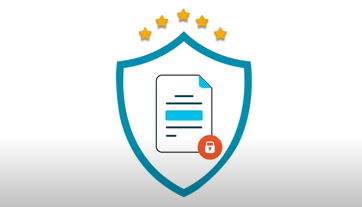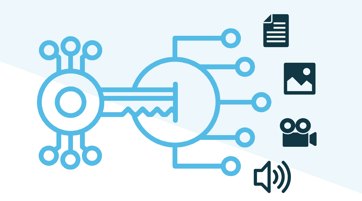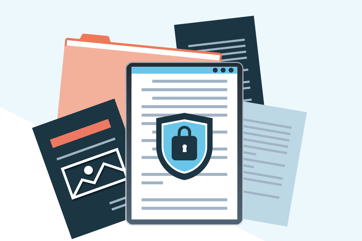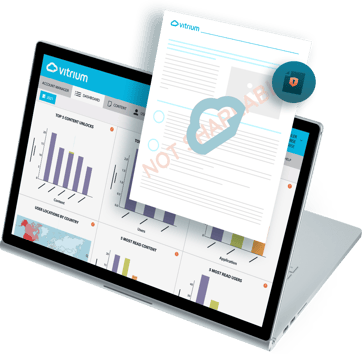There are many different ways in which you can protect PDFs, but they're not all equally secure. DRM is the most effective and complete method.
Obfuscation or Encryption for Document Security?
We just recently included 128-bit military grade encryption in Protectedpdf®’s suite of document security features, in addition to our long-standing obfuscation method of digital rights management. You may be wondering what is the difference between these two security techniques. While each has its own benefits, they also serve different needs. Most organizations are likely going to find one more applicable than the other.
What’s the Difference?
Obfuscation, also referred to as beclouding, is to hide the intended meaning of the contents of a file, making it ambiguous, confusing to read, and hard to interpret.
Encryption is to actually transform the contents of the file, making it unreadable to anyone unless they apply a special key. Encryption ensures that the file remains secure by keeping the content hidden from everyone, even if the encrypted information is viewed directly. If an authorized user does have the key, they can decrypt the file, changing the encrypted content back to its original, readable form.
Obfuscated data, does not require a key and can be deciphered if the original algorithm applied is known. All you need is a decoder ring and you’ll be able to read the secret message (“Be sure to drink your Ovaltine”). With encryption, on the other hand, even if you know the algorithm and have a decoder ring, you will still need a secret key to decrypt the message.
Which to Use?
Obfuscation works well for complicated files and programs and is typically used to prevent piracy and make sure files or programs are being used in a proprietary manner. Obfuscation involves a separate program that need to be packaged with a file or executable item to protect them from unauthorized use. Obfuscation works by masking what a file or program is doing so that users cannot see or manipulate the code. Files protected with obfuscation don’t need to be accessed with any other plug-ins or executable files, making it seamless for the end user.
It’s important to maintain the DRM program with the latest software updates. There is always the possibility that someone could find a way to break through and information is left vulnerable. For this, software engineers are always coming up with new and innovative ways to rewrite portions of such DRM programs to make them even more effective against exterior threats.
Encryption and other types of document protection are important for organizations that deal with extremely sensitive materials and must meet strict compliance or governance obligations. It is especially critical with confidential information that might travel outside of the perimeter, or be synced to cloud-based file sharing services. Encryption encodes files and requires a key to reintegrate the pieces back into an intelligible whole.
Request a demo with someone from our team to talk about which method would work best for your organization.




